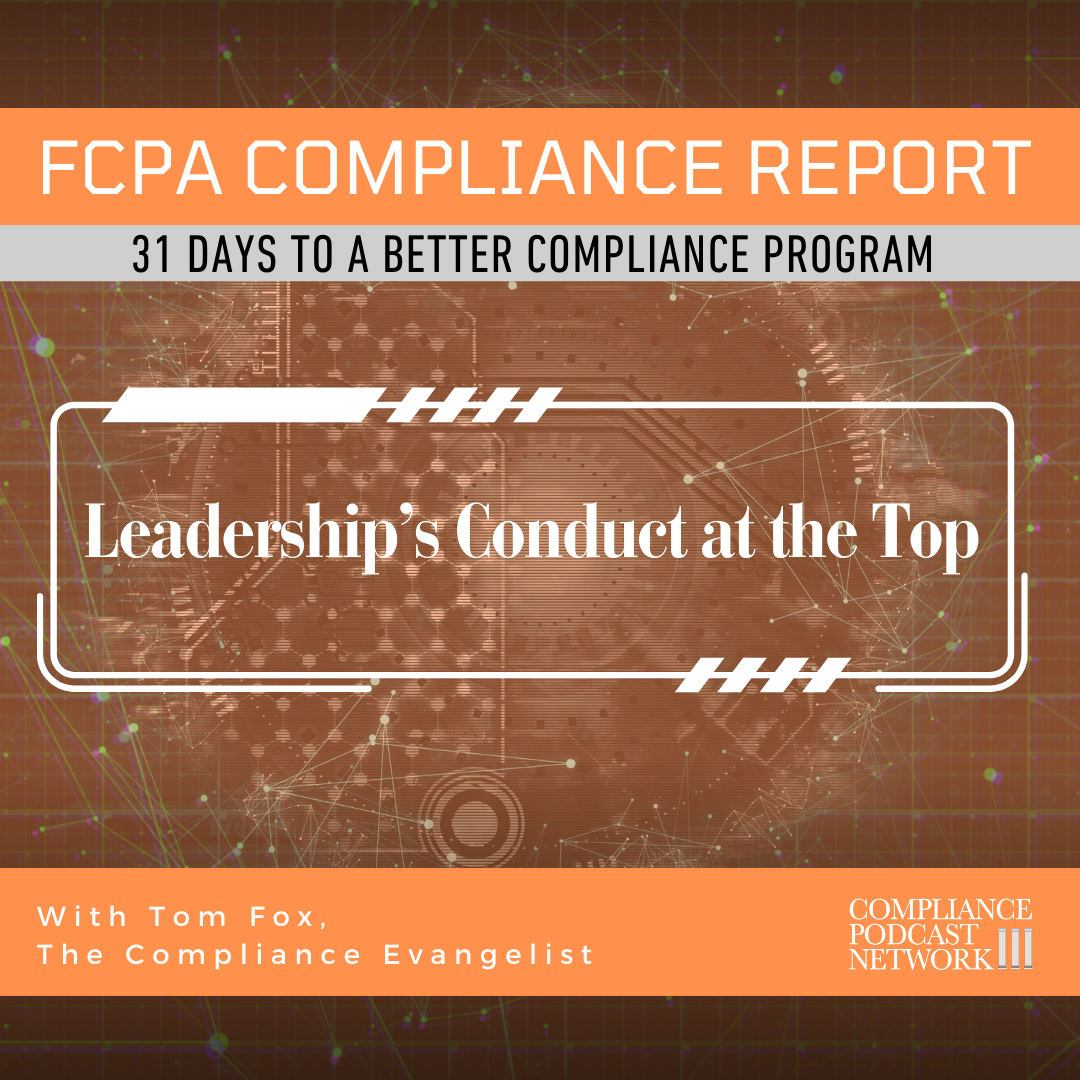This week, we have been exploring how Chief Executive Officers and other senior executives can set an appropriate Tone at the Top by actually walking-the-walk of compliance rather than simply talking-the-talk of compliance. For any corporate compliance program to succeed, the commitment of senior leadership is essential. When establishing and maintaining the right Tone at the Top, few opportunities are as effective and personal as town hall meetings.
Town halls provide CEOs and senior executives with a direct platform to engage with employees across the organization, offering an authentic way to reinforce the importance of compliance. Unlike emails or formal reports, town halls allow real-time interaction, allowing leadership to connect directly with employees and make compliance a part of the company’s culture.
In this concluding blog post from this 5-part series, we will explore how CEOs and other corporate leaders can use town hall meetings to establish and maintain an appropriate tone at the top for a best practices compliance program. From including compliance in every meeting to addressing specific ethical challenges and fostering open dialogue, these strategies will help create a culture where compliance is seen as a shared responsibility and a driver of long-term success.
- Include Compliance in Every Town Hall
One of the most effective ways to reinforce the importance of compliance is to make it a regular topic of discussion in every town hall meeting. Whether covering updates on regulatory changes, sharing new company policies, or discussing recent compliance issues, consistently integrating compliance into your messaging demonstrates that it is a key part of the company’s business strategy.
The obvious significance is that when compliance is a constant in company communications, employees start to understand that it is not a separate, siloed responsibility but a core element of the business’s operations. Regularly addressing compliance issues signals to employees that ethical behavior is as critical to the company’s success as financial performance or market expansion.
How to Implement
- Dedicate a section of each town hall to discussing compliance. This could include updates on new business regulations, how the company adapts to changing legal landscapes, or reminders of key compliance policies.
- Use the platform to highlight how compliance contributes to business objectives. For example, explain how maintaining compliance with environmental regulations helps the company avoid penalties while supporting sustainability goals.
- Regularly including compliance topics also shows that leadership views compliance as proactive rather than reactive and that ethical behavior is a forward-thinking component of company strategy.
By consistently including compliance in town hall discussions, you reinforce its value and ensure it stays at the top of employees’ minds.
- Address Specific Ethical Challenges
Town halls are an ideal venue to address specific compliance or ethical challenges the company may be facing. Whether dealing with emerging regulatory risks, handling a recent compliance breach, or navigating ethical dilemmas in high-stakes business decisions, discussing these issues openly with employees helps build trust and foster transparency.
It is not so much that employees need to know that leadership is aware of compliance challenges and actively working to address them. Discussing these challenges openly sends a message that compliance is a shared responsibility across the organization. This approach also helps demystify the compliance process and shows employees that issues are handled systematically and transparently.
How to Implement
- When a new compliance challenge emerges—whether it’s a change in industry regulations, a data privacy issue, or a new ethical dilemma in business operations—use the town hall to explain the issue clearly. Describe what the company is doing to address it and what is expected of employees to help navigate the challenge.
- Emphasize that compliance is not just the responsibility of the legal or compliance team but requires every employee’s involvement. This ensures that compliance issues are not seen as external or distant from day-to-day operations.
- Consider sharing examples of companies or industries where a failure to address ethical challenges led to significant risks or damages. This helps illustrate the real-world consequences of neglecting compliance.
By openly addressing specific ethical challenges, you build a culture of accountability in which employees feel empowered to participate in compliance efforts.
- Invite Questions About Compliance
One of the most powerful aspects of town hall meetings is their interactive nature. Inviting employees to ask questions about compliance-related topics shows that leadership is open to dialogue and committed to resolving concerns. This openness encourages a culture where employees feel safe raising potential compliance issues and know their voices will be heard.
As I have said many times, the flip side to a culture of speaking up is a culture of listening up. Nothing shows this better than soliciting questions at a town hall, for encouraging questions demonstrates compliance as a collaborative effort. It shows employees that leadership values their input and is willing to engage in a two-way conversation about ethical issues. This is especially important for fostering an environment where employees feel comfortable reporting concerns, knowing that leadership will take them seriously.
How to Implement
- Set aside time during each town hall for a Q&A session focused on compliance. Let employees know they are welcome to ask about compliance issues related to company policies, regulatory changes, or ethical dilemmas.
- Ensure that responses to compliance-related questions are thoughtful and demonstrate a commitment to transparency. If an employee raises a concern, provide an actionable response or explain how the company will investigate further.
- Follow up after the town hall on any unresolved questions. This shows that leadership is committed to addressing compliance concerns beyond the meeting and reinforces trust.
Inviting questions and engaging in meaningful dialogue helps build a culture of openness and encourages employees to take an active role in compliance.
- Highlight Compliance Success Stories
Town halls also provide an excellent opportunity to celebrate successes. By sharing stories of how compliance actions have helped the company avoid risks or achieve positive outcomes, you reinforce the idea that compliance is a value driver, not a burden. Highlighting these stories shows employees that compliance is not just about avoiding penalties but enabling the company to thrive in a complex regulatory environment.
This is one of the time-honored ways to build incentives in an organization. Sharing success stories helps build employee buy-in and engagement with the compliance program. When employees see the tangible benefits of compliance, they are more likely to view it as a positive and necessary part of their work. This also helps combat the perception that compliance is simply about limiting risk or avoiding punishment.
How to Implement
- Use town halls to share specific examples of compliance successes. For instance, you might highlight how the company avoided a regulatory fine by proactively addressing a compliance risk or how strong compliance practices helped secure a valuable business partnership.
- Frame compliance successes in a way that shows how they contribute to broader company goals, such as market expansion, reputation management, or innovation.
- Recognize the individuals or teams who contributed to these compliance successes. This public recognition reinforces that the organization values and rewards ethical behavior.
You highlight compliance success stories and demonstrate that compliance drives long-term value and growth.
- Building a Strong Compliance Culture Through Town Halls
Town hall meetings are one of the most powerful tools CEOs and senior executives can use to establish and maintain an appropriate tone at the top for a best practices compliance program. By including compliance in every meeting, addressing specific ethical challenges, inviting questions, and sharing success stories, leaders can foster a culture where compliance is not just a requirement but a shared responsibility and a source of competitive advantage.
When employees hear directly from leadership about the importance of compliance, they are more likely to internalize the message and make ethical behavior part of their daily work. Through regular and open communication in town halls, CEOs can build a strong compliance culture that drives long-term success for the organization.
I hope you have enjoyed and found this five-part series on Tone at the Top. Equally importantly, I hope this more outline format will allow you to cut and paste this information into a Memo you can send to your CEO and other senior executives to give them some concrete steps they can take to improve your organization’s culture so that your organization will do business ethically and in compliance. Additionally, it will give you an audit trail on this issue if a regulator ever comes knocking.











